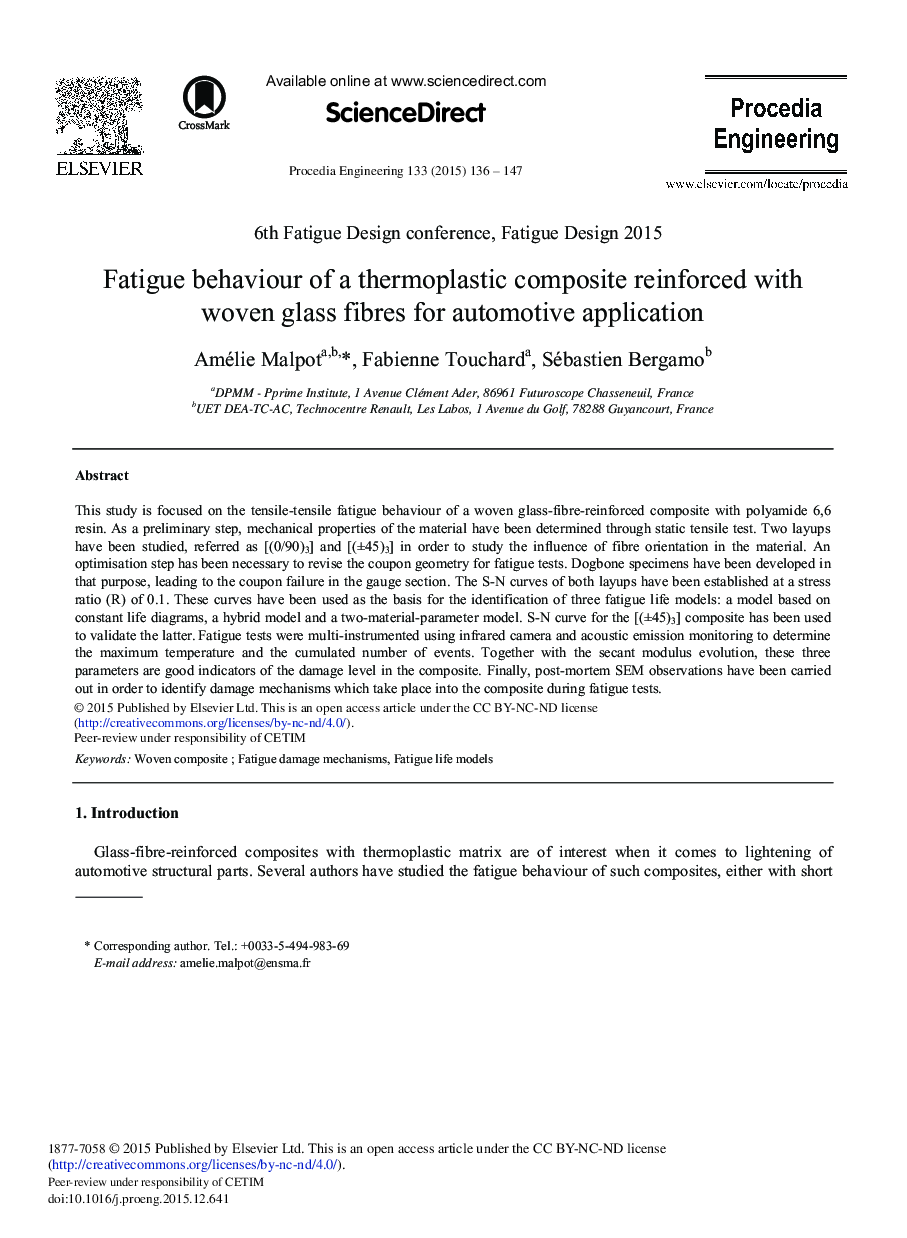| Article ID | Journal | Published Year | Pages | File Type |
|---|---|---|---|---|
| 853927 | Procedia Engineering | 2015 | 12 Pages |
This study is focused on the tensile-tensile fatigue behaviour of a woven glass-fibre-reinforced composite with polyamide 6,6 resin. As a preliminary step, mechanical properties of the material have been determined through static tensile test. Two layups have been studied, referred as [(0/90)3] and [(±45)3] in order to study the influence of fibre orientation in the material. An optimisation step has been necessary to revise the coupon geometry for fatigue tests. Dogbone specimens have been developed in that purpose, leading to the coupon failure in the gauge section. The S-N curves of both layups have been established at a stress ratio (R) of 0.1. These curves have been used as the basis for the identification of three fatigue life models: a model based on constant life diagrams, a hybrid model and a two-material-parameter model. S-N curve for the [(±45)3] composite has been used to validate the latter. Fatigue tests were multi-instrumented using infrared camera and acoustic emission monitoring to determine the maximum temperature and the cumulated number of events. Together with the secant modulus evolution, these three parameters are good indicators of the damage level in the composite. Finally, post-mortem SEM observations have been carried out in order to identify damage mechanisms which take place into the composite during fatigue tests.
